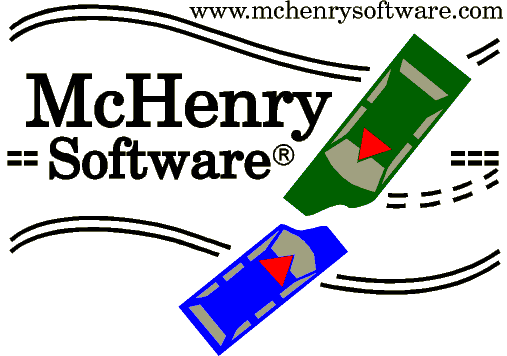

'3-D' or not '3-D', THAT is the Question!
by Brian McHenry
Today, on a PC or MAC laptop or desktop, anyone can easily and affordably make 3-Dimensional animations which can rival Hollywood's best. See Lightwave for THE state-of-the art animation software all for less than $2500 (see our News! page for more information). And with this newfound capability, it is very easy to make anything imagined look very realistic.
For example, a sample application which is included with the Lightwave animation program is how to make a cow fly! By following the example, anyone can create an animation of a cow flying. And very quickly and easily someone could create a very realistic animation such that upon viewing the animation you might believe that cows do indeed fly! So now let's say there is a court hearing to determine whether cow's fly. And at the court, an expert with an advanced degree from an esteemed university and years of experience testifies that 'cows can fly!' and as part of the testimony the expert offers a video to prove it! Well everyone know that cows don't fly, yet, when the expert, impressive in his academic credentials, counters that argument and supplements it with a realistic animation of a cow flying, the jury may be swayed to believe something that is obviously not true.
 (Please
look on TV for the recent ad for Time Warner Cable. It includes images of
realistic looking Pigs flying! The above example could have also been for flying
pigs!)
(Please
look on TV for the recent ad for Time Warner Cable. It includes images of
realistic looking Pigs flying! The above example could have also been for flying
pigs!)
In consideration of the extreme example you might be able to begin to understand the problems which can occur with improper application of animation and/or simulations.
In the field of accident reconstruction there is an increasing use (and abuse) of animation techniques for demonstrative evidence purposes. So you may find yourself, either as an expert or attorney, being faced with a reconstruction which is supplemented with a 3-Dimensional animation. Or perhaps you are an expert who would like to add a 3-Dimensional reconstruction capability to your tool chest.
This page and links are being created to assist interested parties in evaluation of the existing "3-Dimensional" software. With this page we will explain the origins, capabilities and limitations of programs which are available which claim '3-D' analysis and/or simulation'.
m-hvosm =McHenry Highway Vehicle Object Simulation Model
The HVOSM mathematical model consists of up to 15 degrees of freedom; 6 for the sprung-mass, and up to 9 for the unsprung-masses. The mathematical model is based on fundamental laws of physics (i.e., Newtonian dynamics of rigid bodies) combined with empirical relationships derived from experimental test data (i.e., tire and suspension characteristics, load deflection properties of the vehicle structure). The balance of forces occurring within and applied to components of the system are defined in the form of a set of differential equations which constitute the mathematical model of the system. The HVOSM includes the general three-dimensional motions resulting from vehicle control inputs, traversals of terrain irregularities and collisions with certain types of roadside obstacles.
In addition to the substantial effort in validation of the mathematical model, the HVOSM was also uniquely tested by designing an automobile stunt which was used both in a traveling auto-stunt thrill show and in the 1974 James Bond Movie, �Man with the Golden Gun� produced by United Artists Corporation.

For additional discussion on research performed by the McHenrys on HVOSM, Please also see the following:
Please also see our HVOSM information page. McHenry Software licenses the m-HVOSM program to 3rd party graphics and animation vendors.
The following are companies that market "3-Dimensional" animation and reconstruction software.
PC-CRASH is a momentum based collision reconstruction program
- 3-D - The limitations and sensitivities of 2-D PC-CRASH are dramatically increased and compounded when applied to 3-D.
- Multi-Body Option -A multi-body ability was added to PC-CRASH for use in pedestrian/vehicle impacts and simulations. (The multi-body option appears to be basically the ATB program). For more information on limitations of ATB and any occupant simulation models, please see "Occupant Kinematics in Forensics: Evaluating the Appropriateness and Applicability of an ATB Application".
- MADYMO -A 'starter version' of the MADYMO program has been added as an option. MADYMO is a research tool and is subject to the same limitations as ATB for occupant kinematics in accident reconstruction. Please see "Occupant Kinematics in Forensics: Evaluating the Appropriateness and Applicability of an ATB Application".
- Kinematics Calculations - PC-CRASH also includes the ability to create Post-impact, Pre-impact and Acceleration/Braking sequences. These sequences 'can be used for the simulation' (from user manual). Therefore a careful analysis of any animation created with PC-CRASH should include the determination of whether the kinematics calculation option was used.
- Cost: From ~$2500 (2D) to ~$4000 (3-D) with an additional ~$3000 for the MADYMO option.
One company which markets a '3-D Reconstruction and Simulation' package is the Engineering Dynamics Corp (EDC). What they originally marketed was basically a 'value-added' SGI graphics hardware and software package. SGI is Silicon Graphics which is an industry leader in 3-D computer graphics which require dedicated graphics systems. With the advent of Pentium PC's, the need for SGI workstations diminished and Lightwave for the PC provides a low-cost state-of-the art capability all for less than $2500 (see our News! page for more information). In 2001, EDC began marketing a Windows based version of their HVE.
The HVE has the following components:
WHAT YOU NEED to Evaluate an 3-D reconstruction/animation.
If you are faced with someone using one of these tools (or others), what do you need to evaluate what they have done? These programs cost from ~$3000 up to ~$20,000, so to facilitate the evaluation of an application of any of these programs, you need to obtain complete documentation of the analysis procedure.
"This paper has presented a proposed standard for documenting computer generated images, animations, scientific visualizations, etc. The basic standard is that any still images or videos should be documented such that any qualified analyst can reproduce them. This is the requirement for the scientific community in general and should be adopted in the accident reconstruction community. It is important to note that this standard does not refer to any method of generating these images or videos. There is no implication that any one method or any one program is superior to others. This standard addresses only the images and videos and does not address the analysis or opinions being expressed by an analyst. However, the only way to fully understand the analysis being presented or discussed is to have the ability to duplicate the images or video being presented"
- SAE papers can be ordered online at the SAE website: www.sae.org
We also provide consultation services for evaluation of the application of computer programs to accident reconstruction. For information, see McHenry Consultants or call (919)-469-3310 or e-mail McHenry@McHenrysoftware.com
We will be adding to this page in the near future. Please email us with questions, comments, corrections or additional information.
< McHenry Software Homepage >